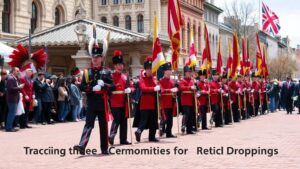The Power of Historical Atlases in Predicting Treasure Locations
The Power of Historical Atlases in Predicting Treasure Locations
This article examines the significant role that historical atlases play in the search and prediction of treasure locations across the globe. By analyzing historical maps, researchers, treasure hunters, and historians can glean insights into former trade routes, settlements, and areas of economic activity, which can lead to potential discovery sites for treasures hidden throughout history.
The Importance of Historical Atlases
Historical atlases are collections of maps that provide a visual representation of geographical areas at specific points in time. Unlike modern maps, which focus on current geographical boundaries and political divisions, historical atlases reveal how regions have changed–shedding light on past economic and social practices.
- Historical atlases often include annotations that provide context, such as significant events, population shifts, and resource exploitation.
- They depict features like old trading routes, ports, and indigenous settlements that can be crucial for understanding treasure locations.
Case Studies and Examples
Several well-documented cases illustrate the effectiveness of utilizing historical atlases in treasure hunting. One notable example includes the search for the lost treasure of the Spanish galleon *Nuestra Señora de Atocha*, which sank off the coast of Florida in 1622. Using a combination of historical maps and navigational charts, treasure hunter Mel Fisher was able to pinpoint the location and successfully recover over $400 million worth of silver and gold.
In another case, the discovery of the ancient city of Troy highlighted the value of historical atlases. Heinrich Schliemann utilized ancient texts and maps that suggested the location of the fabled city, which ultimately led to significant archaeological finds in the late 19th century.
Understanding Geographic and Economic Contexts
The value of historical atlases extends beyond mere navigational tools; they provide a deeper understanding of geographic and economic contexts that influenced past treasure locations. For example, the Silk Road, as indicated by historical maps, was a critical trade route that connected the East and West from the 2nd century BCE. Goods of immense value–including silk, spices, and precious gems–were transported along these paths, leading to the possible burial of treasures by merchants seeking to evade bandits.
- Maps from various periods can provide insight into the types of riches that were valued in specific regions, such as gold in the Americas during the Spanish conquests.
- Changes in political dominion, shown in historical atlases, can also inform researchers about the potential hiding spots for treasures during times of conflict or upheaval.
The Technological Aspect
With the advent of technology, modern treasure hunting has benefitted from the digitalization of historical atlases. Geographic Information Systems (GIS) enable researchers to overlay historical data with current geospatial information. For example, when searching for pirate treasure, like that of Captain Kidd, archaeologists can use GIS to analyze maps from the 17th century alongside satellite imagery to locate likely burial spots.
Challenges and Limitations
While the power of historical atlases in predicting treasure locations is substantial, researchers must be aware of several challenges. Historical maps can often be inaccurate due to limitations in surveying technology of the time. Also, misinterpretation of symbols or scales can lead to incorrect conclusions about an area’s significance.
- Items of treasure are often buried or lost in areas that may not align with historical maps due to terrain changes over centuries.
- Many valuable treasures were moved, melted down, or repurposed–making them difficult to trace using historical records alone.
Actionable Takeaways
For those interested in utilizing historical atlases for treasure hunting, several key strategies can enhance their efforts:
- Start by obtaining accurate historical atlases and maps relevant to the region of interest.
- Combine the information from historic atlases with modern technologies, such as GIS, to enhance spatial analysis.
- Be mindful of the historical context, including trade routes, conflicts, and economic conditions that may affect treasure placement.
Conclusion
In summation, historical atlases provide an invaluable resource in the search for hidden treasures. By offering insights into the geographic and economic forces of historical societies, these atlases allow researchers to make educated predictions regarding potential treasure locations. Although challenges persist, leveraging the combined power of historical context and modern technology holds promise for successful treasure hunting endeavors.


